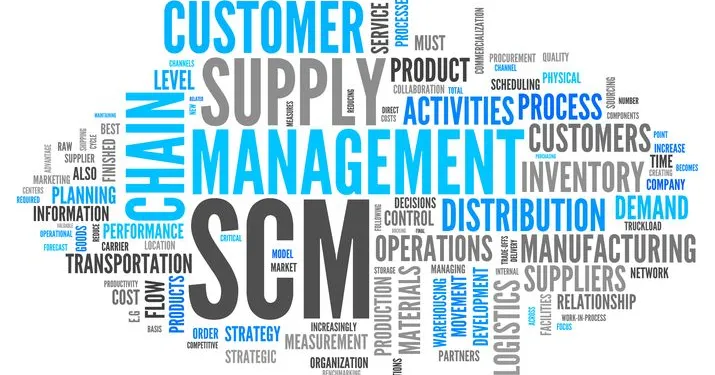Supply chain control is managing the complete manufacturing float of an awesome or carrier — from the uncooked additives in all manners to turning in the final product to the consumer. An organization creates a community of providers that pass the product alongside the providers of uncooked substances to the groups that deal immediately with users.
How does the supply chain control paintings?
According to CIO, there are five additives of conventional supply chain control structures:
Planning
Plan and manipulate all sources required to fulfil client calls for an organization’s product or carrier. When the supply chain is established, it decides metrics to a degree whether or not the supply chain is efficient and powerful, grants fees to clients, and meets organizational goals.
Sourcing
They are choosing providers to offer the products, and offerings must create the effect. Then, set up techniques to screen and manipulate provider relationships. Essential techniques include: ordering, receiving, coping with stock, and authorizing provider payments.
Manufacturing
Organizing the sports required accepting uncooked substances, manufacturing the product, looking for quality, bundling for transport, and creating a timetable for shipping.
supply and Logistics
Coordinate client orders, timetable deliveries, dispatch loads, bill clients, and obtain payments.
Returning
Create a community or technique to take lower back defective, extra, or undesirable merchandise.
Why is supply chain control important?
Effective supply chain control structures decrease fees, waste, and time withinside the manufacturing cycle. The enterprise fashionable has emerged as a simply-in-time delivery chain in which retail income routinely signs replenishment orders to producers. What can then restock retail cabinets nearly as quickly as the product is offered? Another way to enhance this technique is to research the facts from deliver chain companions to look into what may make additional enhancements.
By reading companion facts, the CIO.com publish identifies three situations in which mighty deliver chain control will increase the fee to the pay chain cycle:
They are identifying capability problems. When a client orders a different product than the producer can deliver, the client can whinge about the terrible carrier. Through facts analysis, producers can be capable of assuming the dearth earlier than the client is disappointed.
They are optimizing rates dynamically. Seasonal merchandise has a restricted shelf life. That merchandise is usually scrapped or offered at deep discounts at the cease of the season. Airlines, lodges, and others with perishable “merchandise” regulate charges dynamically to fulfil calls. Using analytic software programs, comparable forecasting strategies can enhance margins, even for complex goods.
They are improving the allocation of “to be had to promise” stock. Analytical software program equipment assists in dynamically allocating sources and timetable paintings primarily based on the income forecast, entire orders, and promises to ship uncooked substances. Manufacturers can verify a product shipping date whilst the order is placed — notably lowering incorrectly-crammed rankings.
Critical functions of robust supply chain control
The delivery chain is the maximum prominent “face” of the commercial enterprise for clients and consumers. The higher and extra powerful an organization’s supply chain control is, the higher it protects its commercial enterprise popularity and long-time period delivery chain control through figuring out the 5 “Cs” of the robust delivery chain control of the future:
Connected: Being capable of getting admission to unstructured facts from social media, dependent facts from the Internet of Things (IoT), and extra conventional facts units to be had through ERP and B2B integration equipment.
Collaborative: Improving collaboration with providers more and more approach the usage of cloud-primarily based trade networks to allow multi-employer cooperation and engagement.
Cyber-aware: The delivery chain needs to harden its structures and guard them against cyber-intrusions and hacks, which should be an employer-extensive concern.
Cognitively enabled: The AI platform turns into the present-day delivery chain’s management tower through collating, coordinating, and carrying out selections and movements throughout the chain. Most of the delivery chain is automatic and self-learning.
Comprehensive: Analytics skills need to be scaled with facts in actual time. Insights can be complete and fast. Latency is unacceptable withinside the delivery chain of the future.
Many supply chains have begun this technique, with participation in cloud-primarily based trade networks at an all-time excessive and foremost efforts underway to reinforce analytics skills.
Evolution of supply chain control
While yesterday’s supply chains had been centred on the availability, motion, and fee of physical assets, today’s delivery chains are approximately the control of facts, products, and services bundled into solutions. Modern delivery chain control structures are roughly a good deal extra than simply in which and whilst. Supply chain control influences product and carrier quality, shipping, costs, client revel, and ultimately, profitability.
As these days as 2017, a standard supply chain accessed 50 instances of extra facts than simply five years earlier. However, much less than 1 / 4 of these facts are being analyzed. That approach, the fee of critical, time-touchy points — which include weather statistics, unexpected hard work shortages, political unrest, and microbursts in call for — may be lost.
Modern supply chains take gain of large quantities of facts generated through the chain technique and are curated by analytical specialists and point scientists. Future delivery chain leaders and the Enterprise Resource Planning (ERP) structures they manipulate will probably require recognition on optimizing the use of these facts — reading it in actual time with minimum latency.
Supply chain consulting
With IBM Services, you may evolve your delivery chain techniques into intelligent workflows to attain new tiers of responsiveness and innovation. Challenge siloed plans to find efficiencies, allow your groups to execute and deliver, and use rising technology like AI and blockchain to unencumber possibilities in each step of the fee chain — from the call for making plans to reserve orchestration and fulfilment.

